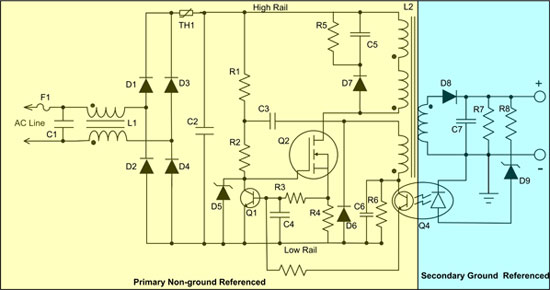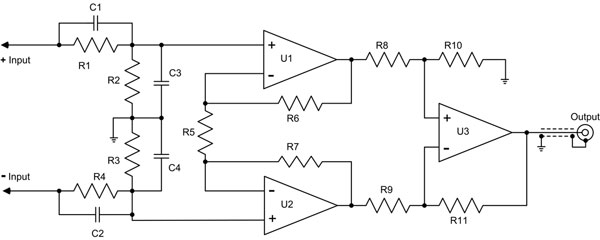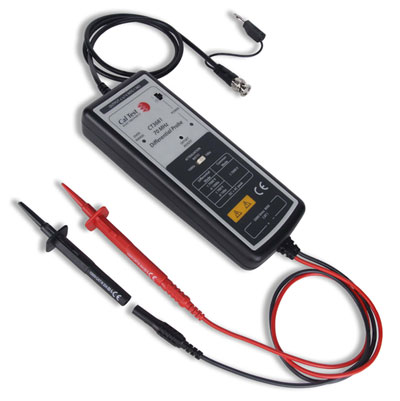Switch mode power conversion for power supplies, industrial controllers, DC-DC converters, DC-AC inverters or UPSs is characterized by high energy efficiency, small size and light weight. However, during the test or troubleshooting of line-powered switch-mode power supplies, there are still several security-related challenges that are difficult to deal with, which requires designers to take certain precautions.
Whether it's dealing with high voltages, high temperatures, line isolation, or voltage measurements for the lowest load requirements and extremely high dynamic range, operation is quite difficult. This article describes the conditions required to build a secure test station, including the various components required for input power control, line isolation, wide dynamic range voltage measurement, and programmable load control.
SMPS test security issuesThe Switch Mode Power Supply (SMPS) turns the high voltage on and off during the shortest conversion time, reducing power loss. There are several safety-related issues with typical line-powered SMPS (Figure 1).

Figure 1: In a typical flyback topology SMPS, the differential voltage between the high-voltage rail and the low-voltage rail may exceed 670 volts. (Source: Digi-Key Electronics)
This is a line-powered power supply with a flyback topology. The primary side of the circuit is highlighted in yellow, and the line (power) input is fully wave rectified and applied to the primary rail. This means that if a 120 volt line is used, the voltage level between the high voltage rail and the low voltage rail is approximately 340 volts, which would be higher than 670 volts if a 240 volt line is used. Technicians and engineers using voltages below 15 volts may need to know that these voltages can be fatal, so care must be taken when using these devices.
This rectified line voltage will be stored on the primary storage capacitor C2. That is, even if the power supply is disconnected from the line, the charge stored on the storage capacitor is still at risk. Before troubleshooting, disconnect the power supply from the line and use a resistor to carefully discharge the primary storage capacitor.
Switching FET Q2 switches between the high and low rails. Even when operated in an efficient manner, the transistor becomes very hot and it is usually mounted on a heat sink. Test operators around the radiator should be careful to prevent burns.
Note that the primary and secondary sections of the power supply are electrically isolated using flyback transformer L2 and optically isolated coupler Q4. The secondary section is grounded at the negative (-) output and the primary section is not grounded. This grounding method can be problematic if you use a grounded input instrument such as an oscilloscope for troubleshooting. Connecting the ground connection of the oscilloscope probe to the component on the primary side of the power supply can cause a short circuit and can damage the main components and the oscilloscope.
SMPS usually needs to meet certain minimum load requirements to run; if the load is not appropriate, the power supply will usually shut down.
Another point is that failure modes usually lead to serious consequences in view of the high voltage used. For example, a shorted bridge rectifier (D1-D4) may apply a line voltage to a primary storage capacitor, which in turn causes the capacitor to drain the dielectric through the vent, even causing an explosion. Therefore, spurts may appear during the design of the SMPS.
Secure SMPS test setupThe SMPS test suite should use several common devices to minimize safety issues (Figure 2).

Figure 2: The SMPS test setup uses an isolation transformer, autotransformer, safety enclosure, and load. (Source: Digi-Key Electronics)
The isolation transformer is primarily used to electrically isolate the primary section of the SMPS. Once isolated, it can be connected to the probe ground of any part of the primary circuit. This way the primary circuit will not be short-circuited. If an isolation transformer (such as the Bel Signal Transformer, model DU-2) has both primary and secondary windings, it can be connected to a 120 volt or 240 volt nominal input. It delivers 9 amps (A) at 240 volts and 18 amps (A) at 120 volts (2 kVA). Isolation transformers rated up to 10 kVA are extremely common.
An autotransformer can be used to slowly increase the line voltage applied to the test device. The input current is monitored during this operation so that faulty components can be discovered before a catastrophic failure occurs. Staco Energy Products Model 3PN1010B is a typical autotransformer that delivers up to 10 A at 0-140 volts (1.4 kVa). Please note that the autotransformer does not provide line isolation, so it must be used in conjunction with an isolation transformer to achieve this function.
As mentioned earlier, testing the SMPS requires a load. The most commonly used load is a non-inductive resistor, but please note that the resistive load group can also become very hot, so it should be protected from accidental contact. Electronic loads are an alternative to fixed resistive load groups with variable loads. The load control capability is very important when running tests such as load regulation and output current foldback. Programmable features are a particularly important consideration if automated testing is required.
The B&K Precision Model 8514 is a typical electronic load rated at 1200 W that can be programmed via USB to operate in constant current, voltage, resistance or power modes over an input voltage range of 0.1-120 V. Electronic loads can also simulate dynamic loads that change over time.
The 8514's safety enclosure provides a physical barrier between the test device and the test operator. It protects nearby operators in the event of an explosion. The enclosure can also be specifically configured to cool the test device and the resistive load set (if used). Such devices typically connect the test device quickly and disconnect.
Line isolationSingle-phase AC lines have hot and neutral lines. The neutral line is grounded in the power distribution system, but may still be a few volts above ground potential at the power source. This causes the primary section of the power supply to have no ground reference. Connecting a grounded oscilloscope probe to any point on the primary circuit can cause a short circuit.
Many technicians and engineers have tried to solve this problem by removing the oscilloscope's ground connection and "floating" the oscilloscope. This is extremely dangerous because it puts the oscilloscope case at a few hundred volts above ground. Anyone who touches the oscilloscope may be electrocuted.
An alternative to floating oscilloscopes is to use an isolation transformer, as shown in Figure 2. This separates the test power supply from the AC line. After using the isolation transformer, a ground connection can be made at any point in the primary circuit and this point is used as a ground reference.
Although voltage measurements can be made using this method, it is more appropriate to use a differential probe designed to measure high voltage. The differential probe has two inputs (not grounded) that measure the voltage difference between the inputs. The voltage difference can be calculated by subtracting the voltage at the other end from the voltage at the other end (Figure 3).

Figure 3: A conceptual diagram of a differential probe showing the probe output is the difference between the + and - inputs. (Source: Digi-Key Electronics)
Differential measurements of differential probes attenuate any voltage signal (called a common-mode signal) common to both inputs. The amount of attenuation of the common-mode signal is the quality factor of the differential probe, known as the common-mode rejection ratio (CMRR), expressed in decibels (dB).
The high voltage differential probe uses high attenuation to measure high voltage before matching the differential input. As shown in Figure 3, resistors R1 and R2 form a compensation attenuator, and resistors R3 and R4 form the other. The output of the attenuator is applied to the input of a differential amplifier that uses three operational amplifiers. A more accurate CMRR can be obtained by carefully matching the components and ensuring a symmetrical PCB layout.
CMRR is very important because voltage measurements in SMPS may require high dynamic range. The primary side of the power supply continuously converts 340 volts and the conversion time is relatively fast. These signals can be radiated to the entire device. Try to measure the gate drive signal on the power FET. This signal is below 10 volts and is difficult to see due to these high voltage common mode signals. Interfering signals can be suppressed using a differential probe with a higher CMRR.
Probes such as Cal Test Electronics model CT3681 utilize X100 or X1000 user-selectable attenuation characteristics (Figure 4). These probes are rated for a maximum voltage of 700 V (X100) or 7 kV (X1000) and have a CMRR of -80 dB and -60 dB at 50 Hz and 20 kHz, respectively, with a bandwidth of 70 MHz. The advantage of this type of probe is the use of standard BNC connectors at the output instead of the proprietary probe interface, which makes them compatible with all oscilloscopes.

Figure 4: Cal Test Electronics CT3681 70 MHz High Voltage Differential Probe. This probe is available in two ranges to support maximum input voltages of 700 volts and 7000 volts. Its CMRR is -80 dB and -60 dB at 50 Hz and 20 kHz, respectively. (Source: Cal Test Electronics)
to sum upAlthough line-powered SMPSs are extremely popular and practical, there are still security issues during testing. However, as described in this article, these risks can be significantly reduced by combining reliable engineering practices with common components such as isolation transformers, autotransformers, electronic loads, and differential probes.
Splice Protection Sleeves,fusion splice protector,Fusion-Protection Sleeves,Heat Shrink Fiber Fusion Splice Protection Sleeves
Sijee Optical Communication Technology Co.,Ltd , https://www.sijee-optical.com